Photojournalist Wades Through Plastic Waste to Document Bali’s Pollution Crisis

As I walked out towards one of Bali’s most famous beaches, I could not believe what I was seeing. As far as the eye could see was plastic. Waves and waves of plastic, ankle-deep, covering the beach.
I walked forward, camera in hand. My steps made a crunching noise as the plastic cracked beneath my feet. Bottles, cups, bags, toothbrushes, bottle caps…. the beach was now a dumping site for every single type of plastic you could imagine.
In January 2025, Bali’s beaches were inundated with waves of plastic pollution. The rainy season flushes Indonesia’s polluted rivers, depositing millions of tonnes of plastic waste into the oceans, which, because of ocean currents, washes up on the country’s beaches.
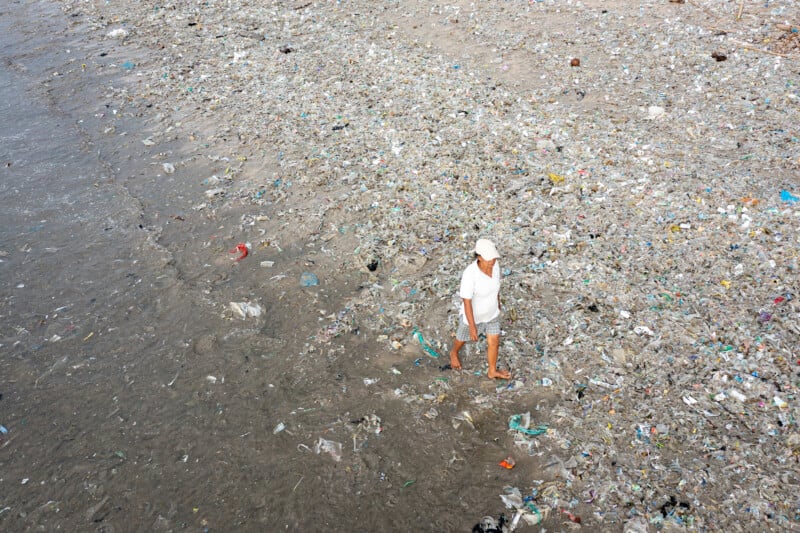
In recent years, the waves of pollution have intensified, but 2025 has been called the “worst year yet” by locals. I had seen some posts by local NGOs on Instagram about what was happening. When I saw the severity of the pollution through those social media posts, I knew it was a story I had to cover. I booked a flight and hotel next to one of the polluted beaches, and I was there within 48 hours. The reality was to prove worse than what I saw on social media.
“With a population of 250 million, Indonesia is the fourth most populous country and second-largest plastic polluter in the world after China. The country produces 3.2 million tonnes of unmanaged plastic waste a year, of which about 1.29 million tonnes ends up in the sea,” the United Nations Environment Program says.
When I arrived, I just couldn’t believe what I was seeing. Entire beaches were covered in piles of plastic. As I looked out into the sea, waves of plastic were being washed up on the shore again, again, and again.
![]()
I turned on my camera (Canon R5 with an EF 24-70mm f/2.8L II USM) and started to photograph what I was witnessing. I mounted a GoPro onto the top of my camera, as I wanted to show people the conditions from both a photographic and video perspective. By mounting the action camera on my main camera, I wanted it to add to the feeling of immersion in the story, taking the viewer with me as I made pictures.
This wasn’t the first time I had witnessed extreme environmental destruction. I have spent 20 years documenting some of the world’s most severe environmental problems from photographing sandstorms in China deforestation in Cambodia, rising sea levels in the South Pacific, and drought in India.
This was some of the worst pollution I have ever witnessed, however. It was the sheer scale of the plastic that surprised me. As I walked along the beaches, plastic lay everywhere. It was an endless expanse.
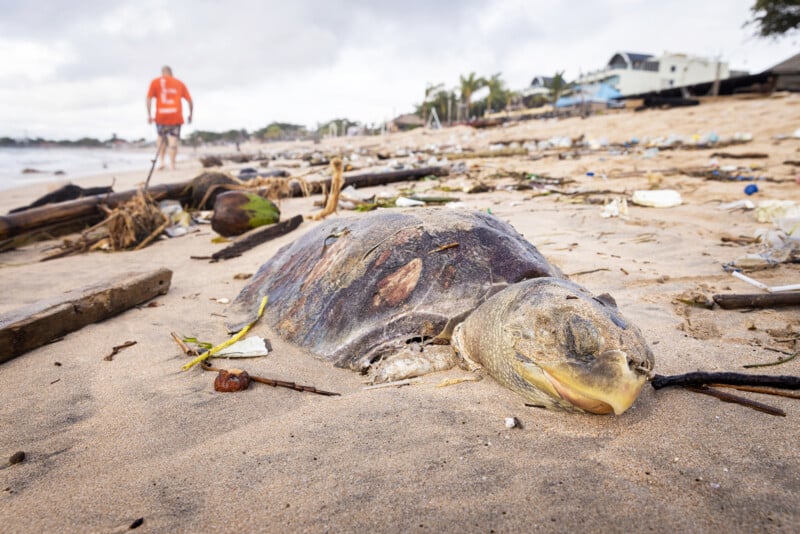
I began to document the destruction. I tiptoed through the plastic. Dead fish lay everywhere. I started to photograph them in this strange dystopian scene. Tourists posed for selfies amongst the plastic, cropping out the plastic in the frames to make sure they still captured the idyllic sunset behind them. I waded out into the shallows as dirty brown waves of water filled with plastic washed over my shoes.
I met with the local NGO whose social media posts had alerted me to what was happening in Bali. They were organising a mass clean-up activity, bringing together local people, volunteers, and NGO workers to try to clean up the plastic that lay on the beaches. It was a noble and valiant effort, but as each piece of plastic was picked up, the waves seemingly brought a hundred others to shore.
I wanted to photograph the people who were involved in the clean-up, in order to show the positive efforts that were being made in order to try to combat this crisis. With the help of my assistant and one small off-camera flash (Canon Speedlite 430EX-III RT), I approached volunteers and made portraits of them as they picked up the plastic. It was such an incongruous scene as people picked up handfuls of plastic in what should have been a pristine beach scene.
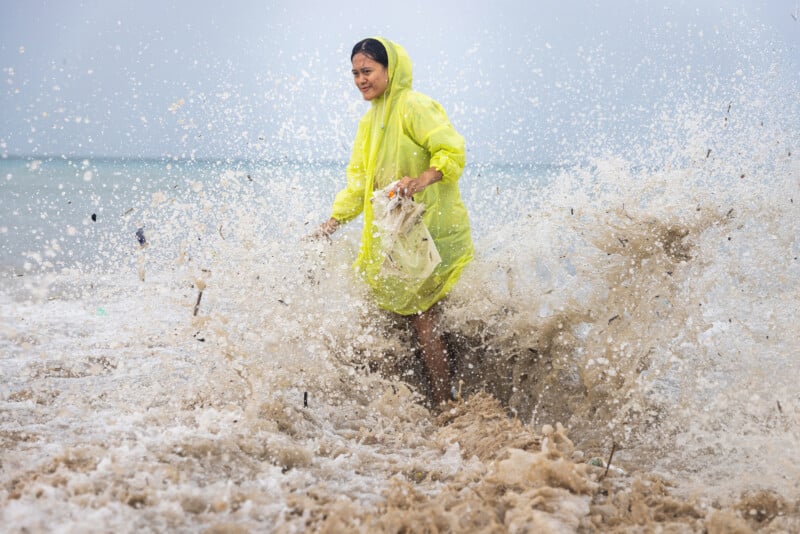
I waded out into the waters to try to capture the volunteers and the extreme conditions in which they were working. As the waves battered both me and them, I had to desperately protect my camera from being caught by the next incoming wave.
As a photojournalist, I knew that I needed to be there, though, in order to capture those images that put the viewer there with me and the volunteers. I wanted the viewer to feel the waves through the photograph, to taste the salt on the lens, to hear the crunching of plastic waste beneath our feet.
As I explored the beaches further, I discovered it wasn’t just fish that were becoming victims of the plastic; there were also much larger animals, such as sea turtles. I discovered one in the shallows, just a few metres away from the busy restaurants that lined Bali’s beaches. It lay motionless, eyes closed, almost like it was asleep amongst the piles of plastic waste.
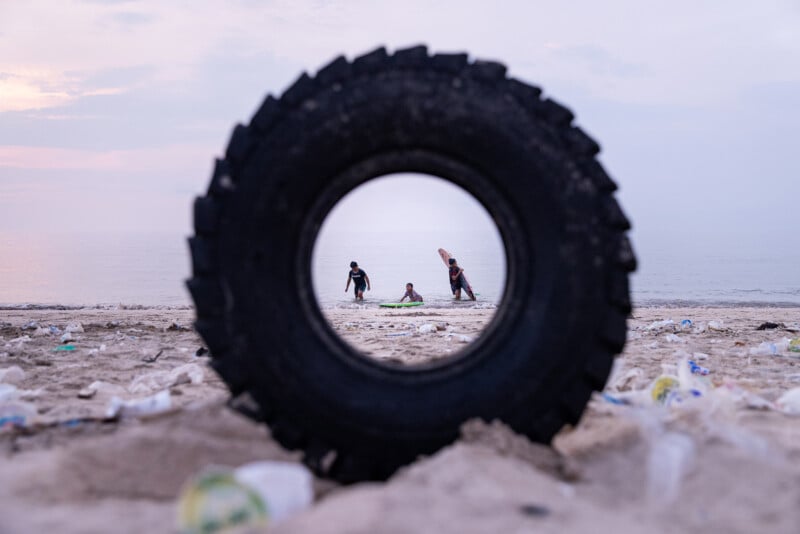
According to the World Wildlife Fund, “research suggests that 52% of the world’s turtles have eaten plastic waste. The reasons are simple: a floating plastic bag can look like a lot of jellyfish, algae, or other species that make up a large component of the sea turtles’ diets…Entanglement in abandoned fishing nets can easily kill them through drowning.”
Tourists queued up nearby to take photos of the sunset, seemingly ignoring the plastic waste around them and the dead sea turtle.
This dystopian scene seemed to say a lot about the current collective attitude to our shared global environmental problems. We know they’re happening, but we prefer to ignore them and pretend they’re not there.
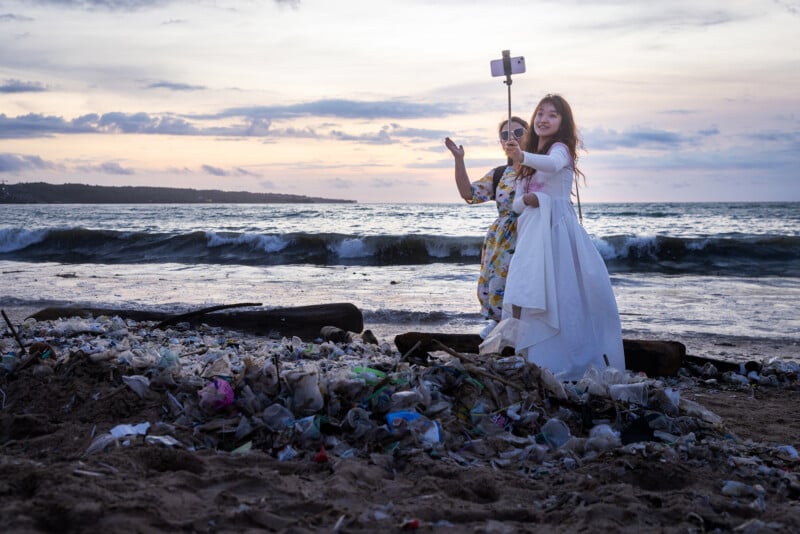
This is where photography comes in. A well-composed frame can highlight these incongruities, injustices, and tragedies. It is the photographer’s job to use their skills in balancing light, composition, and moments in order to reveal something much deeper to the viewer in the form of the story and issues behind the image.
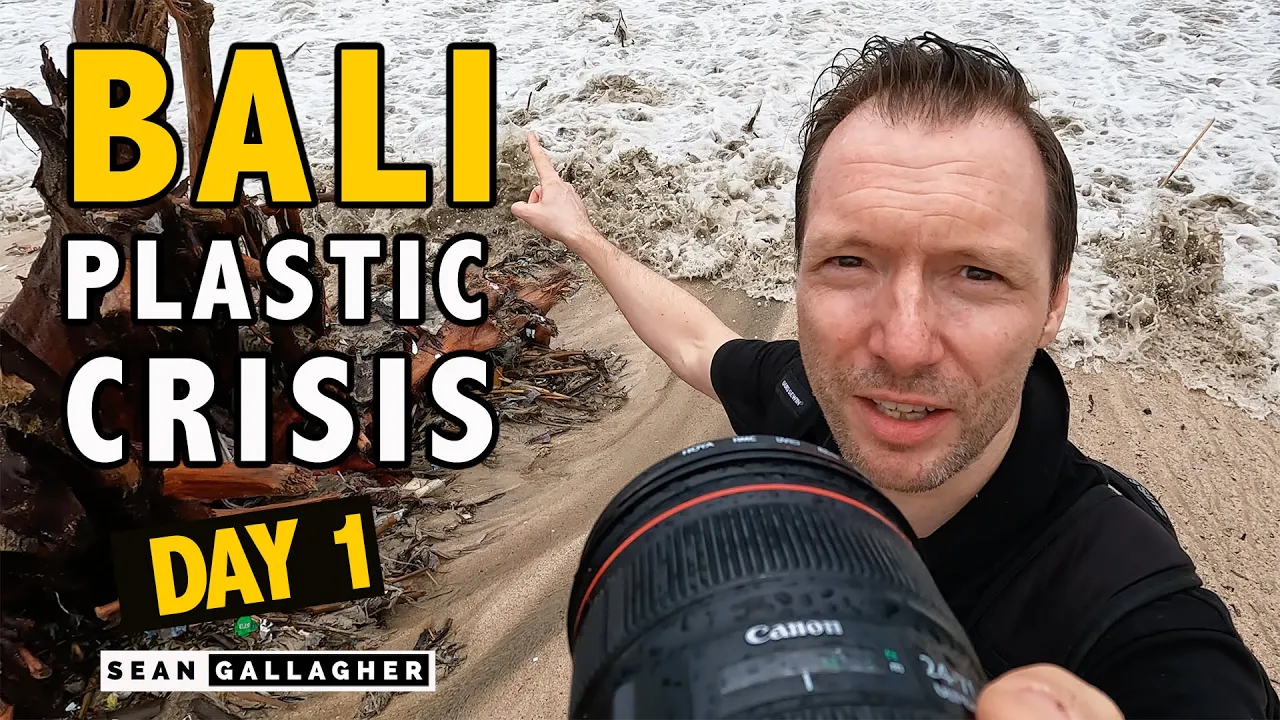
What I witnessed in Bali was truly shocking. I hope the images can act as evidence for the severity of the current global plastic crisis. This may be happening in Indonesia, but the production, use, and recycling of plastic is a global issue that we must all be aware of, pay attention to, and find solutions to prevent this type of environmental disaster in the future.
About the author: Sean Gallagher is a professional photojournalist and documentary filmmaker whose work focuses on the climate crisis and global environmental issues. His work regularly appears with National Geographic, The Guardian, and the Pulitzer Center. Originally from the UK, he has been based in China for over 20 years, covering issues across the Asia-Pacific region. He is a Fellow of the Royal Geographical Society. For more from Sean, you can follow him on YouTube and visit his website.



